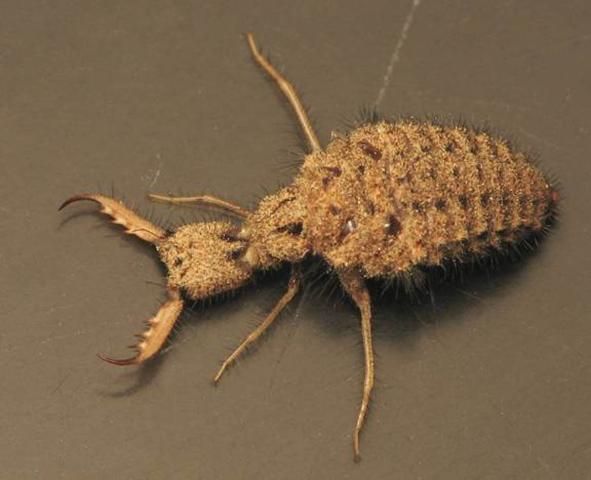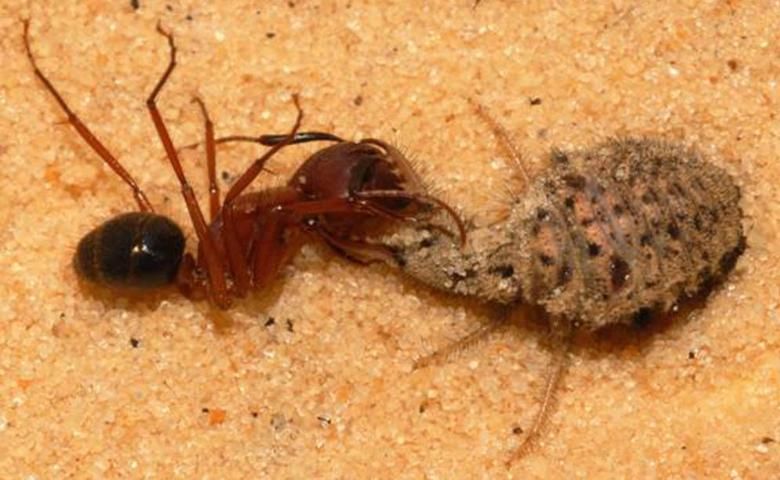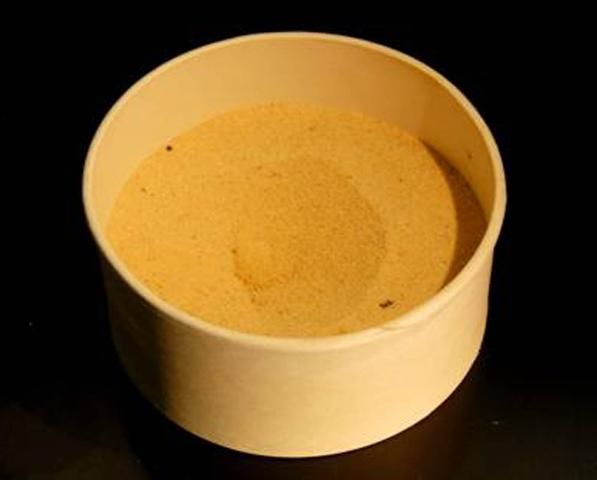Introduction
This document is designed to be used in conjunction with other entomology youth curricula. It is suitable for any age group, although the amount of teacher involvement will vary accordingly. Few illustrations for the entomology classroom are better than live insects themselves. The entire process of orchestrating a live insect illustration for the classroom using antlions is detailed here.
What are antlions?
Antlions are insects belonging to the Order Neuroptera. They are classified in the family Myrmeliontidae. Close antlion relatives are lacewings, owlflies, dobsonflies and fishflies.
Some antlion larvae excavate a conical depression in sandy soil where they wait for prey to get trapped (Figure 1). When an insect falls in, the antlion seizes it and pierces it with its hollow, sickle-shaped mandibles (Figure 2). It injects a paralytic toxin with the first bite, and then the juices are sucked out through the antlion's mandibles (Figure 3). If an insect escapes the antlion and tries to climb the walls of the pit, the antlion will flick grains of sand at it to knock it back down to the bottom. Other antlions do not dig a pit, but rather hunt actively for prey.



Antlions make good insects to keep in captivity because of their interesting habits. Their life cycle can be observed and records kept as to the length of time taken to reach maturity, as well as records of prey species taken. Notes can be made about how the antlion deals with certain prey types, and whether certain species of prey are rejected.
Finding Antlions
Antlions are easily found and collected in Florida. They can be located by searching for the conical depressions they make in dry sand. These are often very abundant under sheltered areas with sandy soil such as under roof overhangs and under raised foundations.
Capturing and Keeping Antlions
The easiest way to capture antlions is to scoop the whole depression, cone pit and all, with a trowel and filter it with a sifter. Antlions generally reside at the base of the pit. If necessary, you can just dump the sand from many "pit scoops" in a big jar and sift the insects out later.
Antlions should be kept in containers half-filled with sand. Appropriate size containers are large plastic water cups, aquariums, insect cages, bowls, etc. (Figure 4). The important dimension is the diameter across the container at the level of the sand; it should be at least 4 inches. If the area at the level of the sand is too small, the antlion will not be able to make an effective pit trap. Antlions do not require supplementary water; they obtain all they need from their prey.

Feeding
Antlions should be fed often; every 2 days is a good rate. Do not worry if you miss feedings. Appropriate food items can be gathered outside, such as ants, spiders, small crickets and other small insects. If wild prey items are difficult to find, small crickets, from a pet store may also be used. Be sure to ask for small crickets, such as 2nd or 3rd stage nymphs. Adult crickets are too large for an antlion to subdue.
It may be fun to fill the container with colored sand from a craft store, to see the colors mix when the antlion digs its pit.
Pupation
The larval period in antlions lasts anywhere from 1 to 3 years, depending on its age when collected. At the end of the larval stage, the antlion will stop eating the food provided to it, and spin a cocoon under the sand, where metamorphosis will occur for about 3 weeks. At this point, it is prudent to place the cup in a larger cage, or to cover the cup with cheesecloth so that the adult cannot escape. Also, provide a stick or something for the new adult to climb up so that its wings can dry and harden. The cup should be checked every day for emergence of the adult, whereupon it may either be released or retained for a collection.
Antlions in the Classroom
Antlions work well as a teaching tool because they are easily observed, very active when feeding, readily accessible, and easy to maintain. Live insects dropped in the antlion's trap will elicit a dramatic response that usually captures the students' attention and generates questions. These questions can form the basis for a classroom lesson.
The following list may prove helpful in developing lessons around the antlion:
- Observe what types of food the antlion will or will not eat
- Examine the construction of the pitfall trap
- Use a varying coarseness of sand and observe how the antlion's ability to construct traps is affected
- Use material other than sand (flour or sugar) and observe the effects
- Release the adult antlion when it emerges, and save the pupal exuviate and cocoon
Internet References
The Antlion Pit: http://www.antlionpit.com/
AntLionFarms.com http://www.antlionfarms.com/
BugGuide: http://bugguide.net/node/view/137